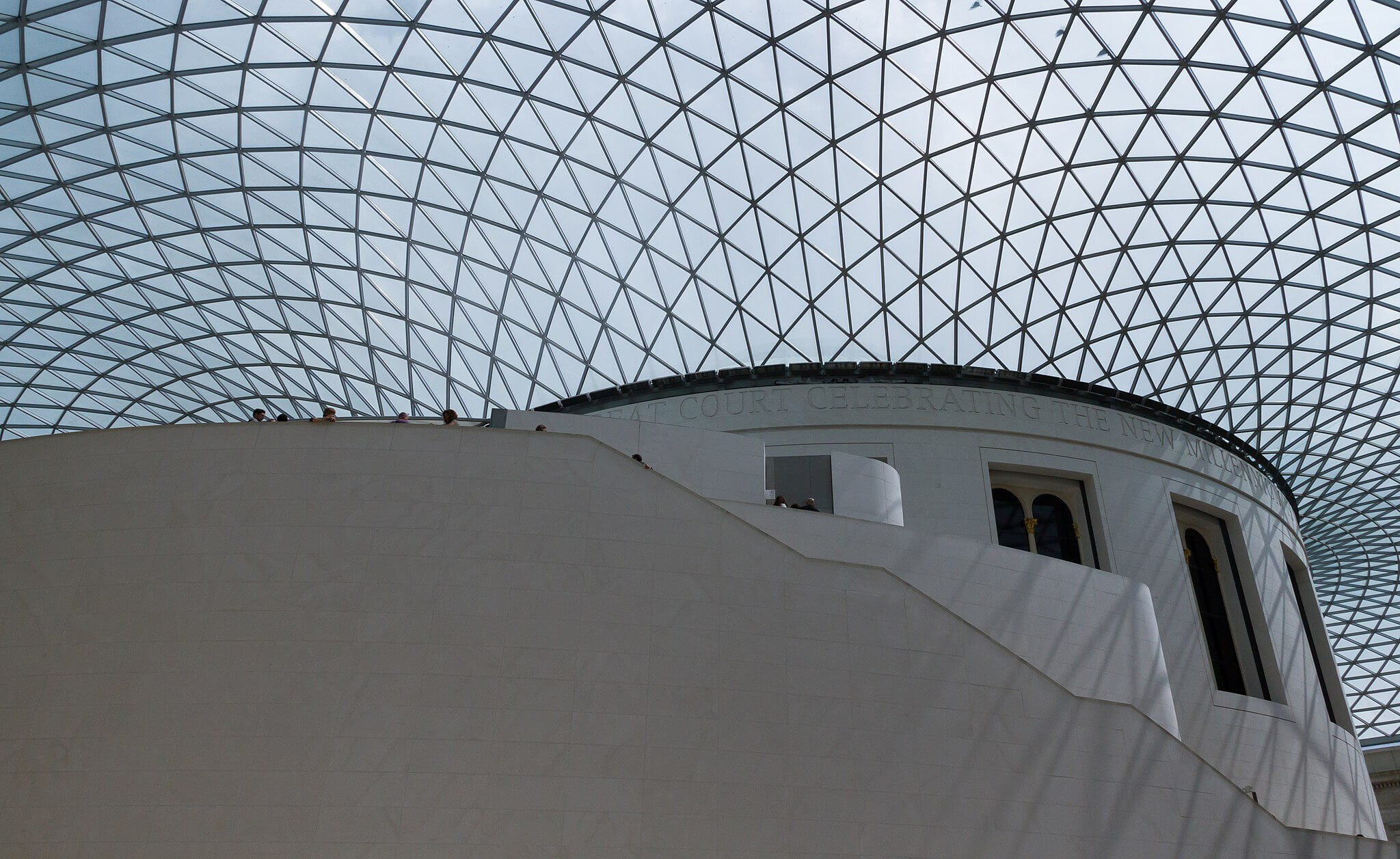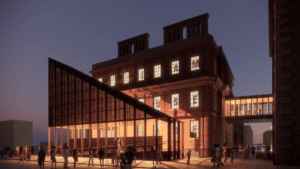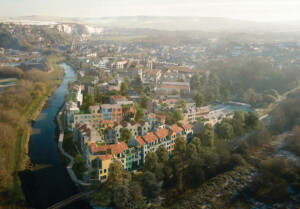The United Kingdom kicked off this week with a queen and is closing it out with a yet-to-be-coronated king.
Yesterday’s death of Queen Elizabeth II at the age of 96 at Balmoral Castle, a royal estate house in Aberdeenshire, Scotland, marked a global news event that no doubt will continue in the days and weeks to come as the U.K. enters a 10-day mourning period. Known as Operation London Bridge, this phase will conclude with a state funeral (the first since Winston Churchill’s in 1965) held at Westminster Abbey. And with that, the second Elizabethan era will have come to an end.
While much ink has been spilled about Elizabeth’s eldest son, who now holds the royal title of King Charles III, and his keen interest in the built environment and support of related causes through his charities, Queen Elizabeth also played a key role in British architecture throughout her seven-decade reign, the longest in the history of the monarchy.
The Royal Institute of British Architects (RIBA) noted this impact in a formal statement penned by president Simon Allford, who thanked the late Queen “for her unwavering support and patronage of our institute during her 70-year reign, a role she inherited from her father and one occupied by every monarch since Queen Victoria.”
“Architecture has undergone huge evolution during the Queen’s seven decades on the throne. At the time of her coronation, following the devastation of WW2, architecture was all about welfare state-sponsored modernism as we entered a brave new world,” wrote Allford. “Today, we’re prioritising innovative, low-carbon design that can meet the challenges of an uncertain future. Throughout these turbulent years, Her Majesty’s steady influence and calm assured presence has been a vital constant for our profession throughout the Commonwealth and beyond.”
Allford goes on to note that Queen Elizabeth not only signed off on the recipients of RIBA’s coveted international architecture prize, the Royal Gold Medal, but was a constant, fancifully behatted presence at ribbon-cutting ceremonies, as she personally inaugurated (and reopened) a vast number of architecturally significant buildings throughout the U.K. and far beyond during her reign. RIBA Journal has highlighted just a few of these works throughout the decades, including the Royal National Theatre (Denys Lasdun & Partners), the Lloyds Building (Richard Rogers Partnership), the London Aquatics Centre at Queen Elizabeth Park (Zaha Hadid), and most, recently, the newly opened Elizabeth Line, a hybrid commuter rail and rapid transit service in London that spans ten stations designed by a consortium of various architects and helmed by Grimshaw Architects.

As for Royal Gold Medal winners that have been bestowed with the monarch’s blessing over the years, they include a slew of midcentury titans such as Le Corbusier (1953), Walter Gropius (1956), and Mies van der Rohe (1959), joined by numerous more contemporary giants of British architecture like James Stirling (1980), Richard Rogers (1985) and David Chipperfield (2011), to name just a few. More recent awardees include Nicholas Grimshaw (2019), Shelley McNamara and Yvonne Farrell of Grafton Architects (2020), David Adjaye (2021), and Balkrishna Doshi (2022).
“I had the privilege to know Her Majesty Queen Elizabeth II for the last five decades of her remarkable 70-year reign as our monarch. During that time, myself and colleagues were honoured to welcome her on many occasions when she celebrated projects for which we had been commissioned and, on a more personal level, my greatest honour was, in 1997, to be appointed to the Order of Merit – an award which is in the sole gift of the sovereign,” said Norman Foster, 1983 recipient of the Royal Gold Medal, in a statement shared by The Architects’ Journal. “These various privileges granted me an insight to a lady whose leadership, loyalty and regal humility were faultless, throughout her life and her reign, and endured to the end. With today’s sad news, myself, my family and my colleagues share in the grief that is felt across the nation, the Commonwealth and the wider world.”











